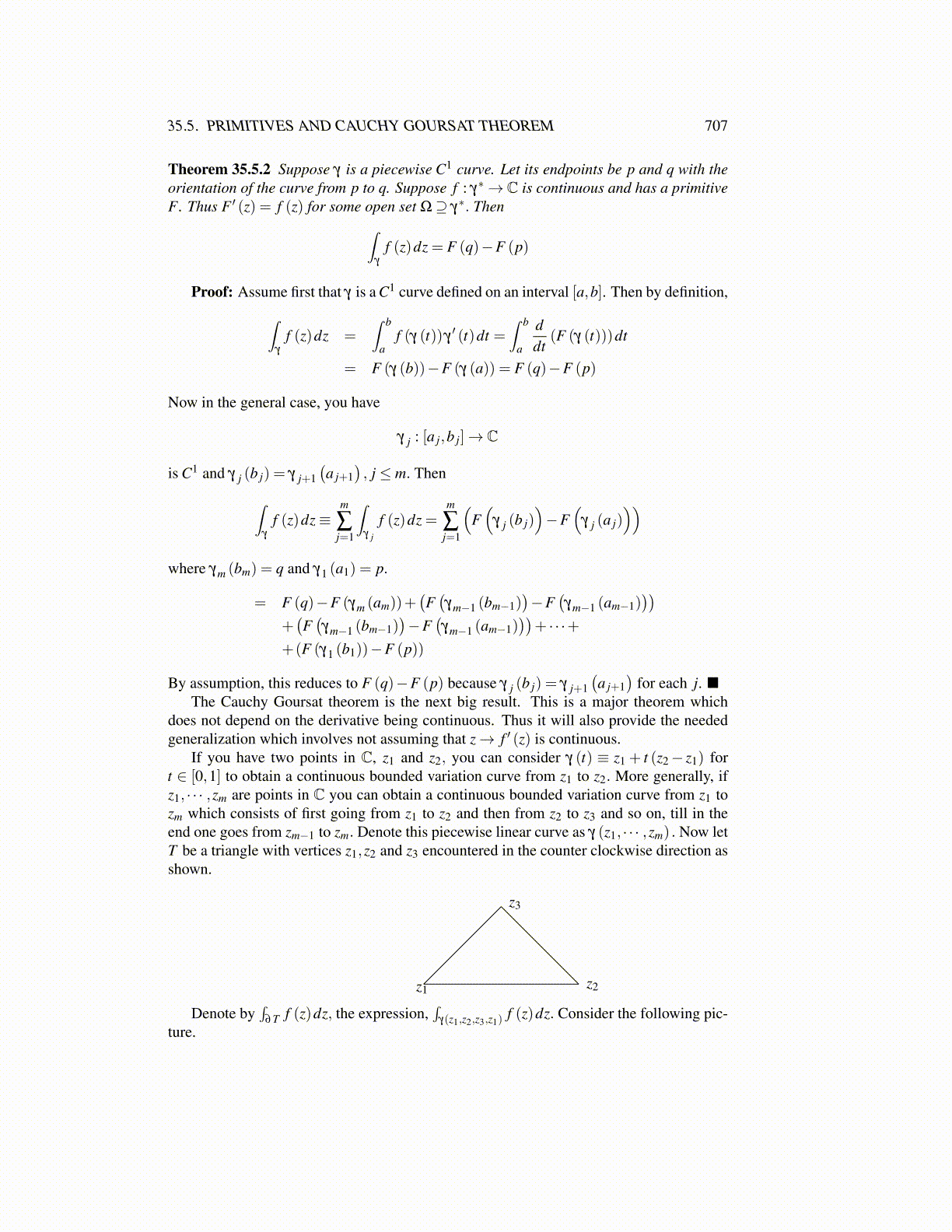
35.5. PRIMITIVES AND CAUCHY GOURSAT THEOREM 707
Theorem 35.5.2 Suppose γ is a piecewise C1 curve. Let its endpoints be p and q with theorientation of the curve from p to q. Suppose f : γ∗→ C is continuous and has a primitiveF. Thus F ′ (z) = f (z) for some open set Ω⊇ γ∗. Then∫
γ
f (z)dz = F (q)−F (p)
Proof: Assume first that γ is a C1 curve defined on an interval [a,b]. Then by definition,∫γ
f (z)dz =∫ b
af (γ (t))γ
′ (t)dt =∫ b
a
ddt
(F (γ (t)))dt
= F (γ (b))−F (γ (a)) = F (q)−F (p)
Now in the general case, you have
γ j : [a j,b j]→ C
is C1 and γ j (b j) = γ j+1(a j+1
), j ≤ m. Then
∫γ
f (z)dz≡m
∑j=1
∫γ j
f (z)dz =m
∑j=1
(F(
γ j (b j))−F
(γ j (a j)
))where γm (bm) = q and γ1 (a1) = p.
= F (q)−F (γm (am))+(F(γm−1 (bm−1)
)−F
(γm−1 (am−1)
))+(F(γm−1 (bm−1)
)−F
(γm−1 (am−1)
))+ · · ·+
+(F (γ1 (b1))−F (p))
By assumption, this reduces to F (q)−F (p) because γ j (b j) = γ j+1(a j+1
)for each j. ■
The Cauchy Goursat theorem is the next big result. This is a major theorem whichdoes not depend on the derivative being continuous. Thus it will also provide the neededgeneralization which involves not assuming that z→ f ′ (z) is continuous.
If you have two points in C, z1 and z2, you can consider γ (t) ≡ z1 + t (z2− z1) fort ∈ [0,1] to obtain a continuous bounded variation curve from z1 to z2. More generally, ifz1, · · · ,zm are points in C you can obtain a continuous bounded variation curve from z1 tozm which consists of first going from z1 to z2 and then from z2 to z3 and so on, till in theend one goes from zm−1 to zm. Denote this piecewise linear curve as γ (z1, · · · ,zm) . Now letT be a triangle with vertices z1,z2 and z3 encountered in the counter clockwise direction asshown.
z1 z2
z3
Denote by∫
∂T f (z)dz, the expression,∫
γ(z1,z2,z3,z1)f (z)dz. Consider the following pic-
ture.